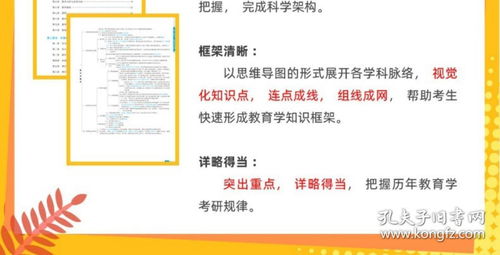教育学311知识点
教育学311讲义 培养学生创造力的重要性及方法
引言:
创造力是人类智慧和创新力的核心之一,它在学生的学习和发展中扮演着至关重要的角色。本讲义将讨论培养学生创造力的重要性,并提供一些实用的方法和策略。
一、创造力的重要性:
1.1 增强学习能力:创造力鼓励学生尝试新思维和方法,促进思考的灵活性,并提高学术表现。
1.2 培养问题解决能力:创造力培养学生在面对问题时的创新思维和解决问题的能力。
1.3 提升自信心:创造力培养让学生相信自己能够独立思考和解决问题,增强他们的自信心。
1.4 促进创新和社会进步:培养学生的创造力可以为社会创新带来新的想法和解决方案,推动社会的发展和进步。
二、培养学生创造力的方法:
2.1 提供开放的学习环境:为学生提供一个允许他们自由思考和表达的环境,鼓励他们参与讨论和分享想法。
2.2 鼓励问题提问和探索:鼓励学生提出问题,并引导他们通过探索和实验找到答案。
2.3 引导学生进行跨学科思考:组织跨学科的学习活动,帮助学生将不同领域的知识和概念联系起来,培养出创造性的思维。
2.4 提供具有挑战性的任务和项目:给学生提供有挑战性的任务和项目,激发他们的创造力和解决问题的能力。
2.5 鼓励学生展示和分享作品:鼓励学生分享他们的创意和作品,可以通过展览、演讲等形式,增加学生的自信心和动力。
2.6 培养学生的批判性思维:帮助学生评估和分析信息,并培养他们对事物的批判性思考,以激发创造性的想法。
三、评估和反馈:
3.1 采用多元化的评估方法:除了传统的考试和测验,还可以采用项目评估、作品评价、同伴评价等多种评估方法,更全面地了解学生的创造力和学习成果。

3.2 提供建设性的反馈:对学生的创作作品、实验结果等进行具体、积极的反馈,鼓励他们进一步改进和发展。
3.3 设立目标和追踪进展:与学生一起设立创造性目标,并定期追踪和评估他们的进展,帮助他们发现自己的成长和提高的地方。
结论:
培养学生的创造力是当代教育的重要任务之一,创造力让学生更全面地发展自己的能力,并为社会的进步和发展做出贡献。教育者应该创造适合学生发展创造力的环境和机会,并给予学生积极的反馈和支持,以引导他们成为有创造力和创新思维的个体。
Education 311 Lecture Notes Importance and Methods of Cultivating Students' Creativity
Introduction:
Creativity is one of the core aspects of human intelligence and innovation, and it plays a crucial role in students' learning and development. This lecture notes will discuss the importance of cultivating students' creativity and provide some practical methods and strategies.
I. Importance of Creativity:
1.1 Enhancing learning abilities: Creativity encourages students to try new ways of thinking and approaches, promoting flexibility of thinking and improving academic performance.
1.2 Developing problemsolving skills: Creativity cultivates students' innovative thinking and problemsolving abilities when faced with challenges.
1.3 Boosting selfconfidence: Nurturing creativity enables students to believe in their own abilities to think independently and solve problems, enhancing their selfconfidence.
1.4 Promoting innovation and social progress: Fostering students' creativity can bring new ideas and solutions to society, driving social development and progress.
II. Methods of Cultivating Students' Creativity:
2.1 Providing an open learning environment: Creating an environment that allows students to freely think and express themselves, encouraging their participation in discussions and sharing of ideas.
2.2 Encouraging questioning and exploration: Encourage students to ask questions and guide them in finding answers through exploration and experimentation.
2.3 Facilitating crossdisciplinary thinking: Organize interdisciplinary learning activities to help students connect knowledge and concepts from different fields, fostering creative thinking.
2.4 Providing challenging tasks and projects: Offer students challenging tasks and projects that stimulate their creativity and problemsolving abilities.
2.5 Encouraging the display and sharing of work: Motivate students to share their creativity and works through exhibitions, presentations, etc., increasing their selfconfidence and motivation.
2.6 Developing students' critical thinking: Help students evaluate and analyze information, cultivate their critical thinking, and stimulate creative ideas.
III. Assessment and Feedback:
3.1 Adopting diverse assessment methods: In addition to traditional exams and tests, use project assessments, work evaluations, peer evaluations, etc., to gain a more comprehensive understanding of students' creativity and learning outcomes.
3.2 Providing constructive feedback: Provide specific and positive feedback on students' creative works, experiment results, etc., encouraging them to further improve and develop.
3.3 Setting goals and tracking progress: Collaboratively set creative goals with students and regularly track and assess their progress, helping them recognize their growth areas and improvements.
Conclusion:
Cultivating students' creativity is an important task in contemporary education. Creativity enables students to develop their abilities comprehensively and contribute to the progress and development of society. Educators should create environments and opportunities conducive to students' creative development, and provide them with positive feedback and support to guide them to become individuals with creative and innovative thinking.
关键词:教育学311专业课平均分教育学311知识点教育学311考几本书教育学311笔记教育学311考研真题
上一篇:花果园早教机构
下一篇:幼儿教师教育格言座右铭
